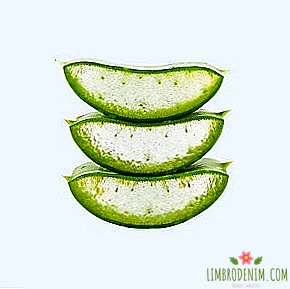From Plowing to Diving: How to take care of ecology is fun
Scientists have discovered plastic at the bottom of the Mariana Trench. Rescuers caught a dolphin, which before dying tore plastic bags. Real garbage islands larger than the state of Texas were found in the sea. Ecology problems cease to be scary scientists and become reality. We have compiled a list of nine items that help prevent environmental pollution, and at the same time are capable of benefiting ourselves.

Plowing
Plowing first appeared in the Scandinavian countries, which have already given the world such phenomena with strange names like Hyugge and Lag. Having discovered the secret of creating comfort from candles and blankets, the Scandinavians got to the ecology and invented an ecofitness type in which running and garbage collection are combined (“plocka” in Swedish means “to collect”, and “jogga” to “run”). The meaning is simple and ingenious: you run and at the same time collect in a bag jars, bottles, wrappers, cups and everything else that can be picked up and sent to a trash can. The hashtag #plogging already has more than 11,000 posts, and plugger communities appeared in Europe, the USA, countries of Asia and Latin America, and reached Russia.
According to the Swedish fitness application Lifesum, plowing at the expense of additional bending and squatting allows you to burn more energy than regular running: you can spend 288 kilocalories in half an hour, while during a regular jogging - 235. Active walking with the same anti-garbage can help spend around 120 kilocalories in thirty minutes.
It is possible to realize the love of sport and nature not only on land: in the world such phenomena as eco kayaking and eco-diving, which work in the same way as pitting, only in water, are gaining in popularity. Eyewitnesses report that for a forty-five-minute boat ride you can collect several kilograms of plastic bottles, bags, fishing nets and other debris, spending 250-300 kcal per hour. In Russia, such types of activity are not very developed yet, which means it is possible to become the first: for example, we have not yet found the hashtags "eco-lifting" or "eco-kaydarochnik" in instagram.
Disclaimer Disposable Bottles
Taking care of your health is not only regular physical activity and a balanced diet, but also compliance with the drinking regime. Recall that limiting yourself to drinking during workouts is a harmful myth. Without sufficient hydration, the protein is no longer normally synthesized and the conduction of electrical impulses is disturbed (which leads to a decrease in strength, the appearance of muscle spasms and deterioration of the heart). The implementation of these recommendations can be made more environmentally friendly, taking the rule of taking your own water bottle with you for training.
Gyms have made their (and rather tangible) contribution to environmental pollution. For example, the London company Rebel 1 calculated that over the year the customers of its two fitness centers emit more than 37 thousand disposable bottles (excluding plastic cups for water and protein shakes). Realizing that one such bottle would decompose for about 450 years, the company banned disposable dishes and installed drinking fountains for its customers. The owners of domestic gyms are not yet so principled that it does not prevent them from taking matters into their own hands and buying, finally, their own capacity; Options are now available for every taste and wallet.
Conscious running
Taking part in the race in support of the environment is a great opportunity to combine sport and environmental action. One of the most famous events of this kind in Russia is the International Baikal Ice Marathon, whose participants cover a distance of 42 kilometers on the ice of the deepest lake on the planet. The purpose of the race is to draw attention to the state of the water of Lake Baikal, which causes concern among specialists.
Another interesting idea at the junction of sports and ecology belongs to WWF: the organization offered to compete in the race with the Amur tigers. The essence of the project is as follows: through the application on the phone, a person makes a bet that he will run more than a tiger in a week (and these animals run about 9.6 kilometers per day). If the results are more modest than those of striped predators, they will have to transfer a few dollars to them. Thus, WWF is trying to support an endangered population of Amur tigers, of which there are no more than 450 left. In general, the subject matter of ecolabels is quite extensive: a zombie race dedicated to the problems of nuclear energy, runs in favor of bison, clean ocean and much more. And if the choice does not suit you, you can think about organizing your own marathon.

Your garden and walks through the woods
Garden beds are a place where love for oneself and care for nature effectively coexist. Growing your own greens, fruits, berries and vegetables reduces the number of purchases in supermarkets, where almost every cucumber, orange and a bunch of parsley is packed in a separate plastic container. It is also a great way to take care of the health of loved ones: how you water and process squash and cabbage, only you decide. Perhaps, being engaged in a kitchen garden, you do not improve the ecology globally - but at least save a small piece of land that is not filled with cement.
In addition, work in the garden - a good way to keep yourself in good shape. It is equal to moderate intensity cardio loads and allows you to spend 150-300 kilocalories per 30-45 minutes (and according to other calculations - much more). Winter is not a reason to throw the cottage. It is worth visiting there to remember, for example, about birds that can be fed, leaving them seeds. Another way to combine business with pleasure is to go to the forest for mushrooms and berries. The taste of “wild” raspberries will surely surprise you in comparison with the taste of berries from the supermarket, and the main advantage of forest fruits is again the lower cost of plastic with more physical activity.
To give up smoking
Smoking is harmful to health, hits the wallet and remains an antisocial habit - but if all these arguments do not work, then you can pay attention to another aspect. Cigarettes cause significant harm to nature. Cigarette filters are made from cellulose acetate, a material that cannot degrade in the environment. At the same time, about 4.3 trillion cigarette butts are thrown out in the world every year, which is about a quarter of the total waste that is thrown away. Filters and cigarettes also account for about a quarter of all the garbage collected on the coasts.
This is not all: chemicals, retained by filters, are toxic to living beings. During the experiment, it was found that one stub needed only four days to contaminate a liter of water and kill all the fish in it. Filters that are thrown on the street often end up in wastewater and may end up in lakes and rivers whose inhabitants take them for food.
Waiver of car
Scooter, bike, rollers, longboards, jumpers - this is not a complete list of alternatives to the car. All these methods of movement create an aerobic load, that is useful for the heart, lungs and blood vessels. Regular cycling, for example, reduces the risk of cardiovascular diseases by 45%, malignant tumors by 40%, prevents the development of mental disorders and depression, and also affects the activity of the thymus, an important organ of the immune system where T-lymphocytes mature.
In addition, cycling can actually reduce air pollution. It was estimated that if 10% of all trips outside London were made on a bicycle, it would save 100 lives a year from death due to diseases caused by dirty air. In addition, bicycles reduce the level of noise, which negatively affects the health of people and animals.

Ecotourism
Tourism is not in vain as one of the means of rehabilitation - its impact on health is so great. It has been proven that traveling helps reduce the risk of cardiovascular diseases, increases satisfaction and happiness, hinders the development of depression, and gives inspiration. Is it possible to combine the love of travel and the care of nature? It turns out that there are many such projects in the world, and new ones appear almost every day. The main thing is to decide on the country and the type of assistance you want to provide.
Here are just a few possible options: taking care of elephants in Sri Lanka or Thailand, developing green energy in Oaxaca (Mexico), participating in clean-up actions for the beaches, saving coral reefs on Komodo Island and much more. In addition, any trip can be made more "green" by following simple recommendations: prefer small local restaurants instead of large chain establishments, take a bottle of water and a reusable shopping bag, use public transport or walk more.
Food at home
Cooking at home has many advantages compared to ordering a delivery or going to a restaurant (although the same can be said with reverse comparison). First, it allows you to more consciously and attentively what you eat, and to control calorie intake (in the study among 9,500 people, those who cooked at home regularly ate much less fat and sugar than those who preferred to eat in cafes and restaurants). It also allows you to monitor the quality of products and ways of their preparation. But this is not all: dinner at home will definitely improve your ecocarme. For example, when ordering sushi, you are expected not only by the long-awaited rolls, but also by a bunch of plastic containers (for soy sauce, ginger, sushi sets).
Another problem is throwing away food. According to some estimates, in developed countries one person on average sends about 100 kg of finished products per year to the trash can. In total, one third of all the calories produced is thrown out in the world - such an amount would be enough to feed ten billion people, that is, three times more than the number of people who are starving. At home, if you have not calculated the amount of food, you can always leave an extra portion in the fridge for tomorrow or freeze it for the future.
Green equipment
Sports halls and equipment consume a lot of energy - and some manufacturers have paid attention to it. They came up with models of exercise bikes, ellipses and steppers, which work not from the network, but from the fact that the person sets them in motion. Generators that convert mechanical energy into electricity are installed on exercise bikes in more than eighty US cities - and this allows you to save not only natural resources, but the budget of fitness clubs. Some companies have gone even further and released equipment that can convert kinetic energy, accumulate it and continue to spend on the needs of the client.
For example, the company The Green Microgyms calculated that, on average, a person can generate 50-75 watts of energy during a session on their exercise bike. At the same time, 5 watts is enough to charge a smartphone, 10 watts - a tablet, 50 watts - a computer and 100 watts - a 40-inch LED TV. The owners of such simulators calculated that for the year, thanks to them, they covered their own energy consumption by 36%, saving 37,000 kW / h of energy. Prices for such simulators can vary from 800 to 10 thousand dollars - and if now you cannot afford this pleasure, you can plunge into the quirky world of cheap inventory from scrap materials. Weights for arms and legs from plastic bottles, barbells from tires, weights from old balls and many other ways to create a rocking chair from nothing can be freely found on the Internet.
Photo: ping han - stock.adobe.com, Rawf8 - stock.adobe.com, Alexander Potapov - stock.adobe.com





